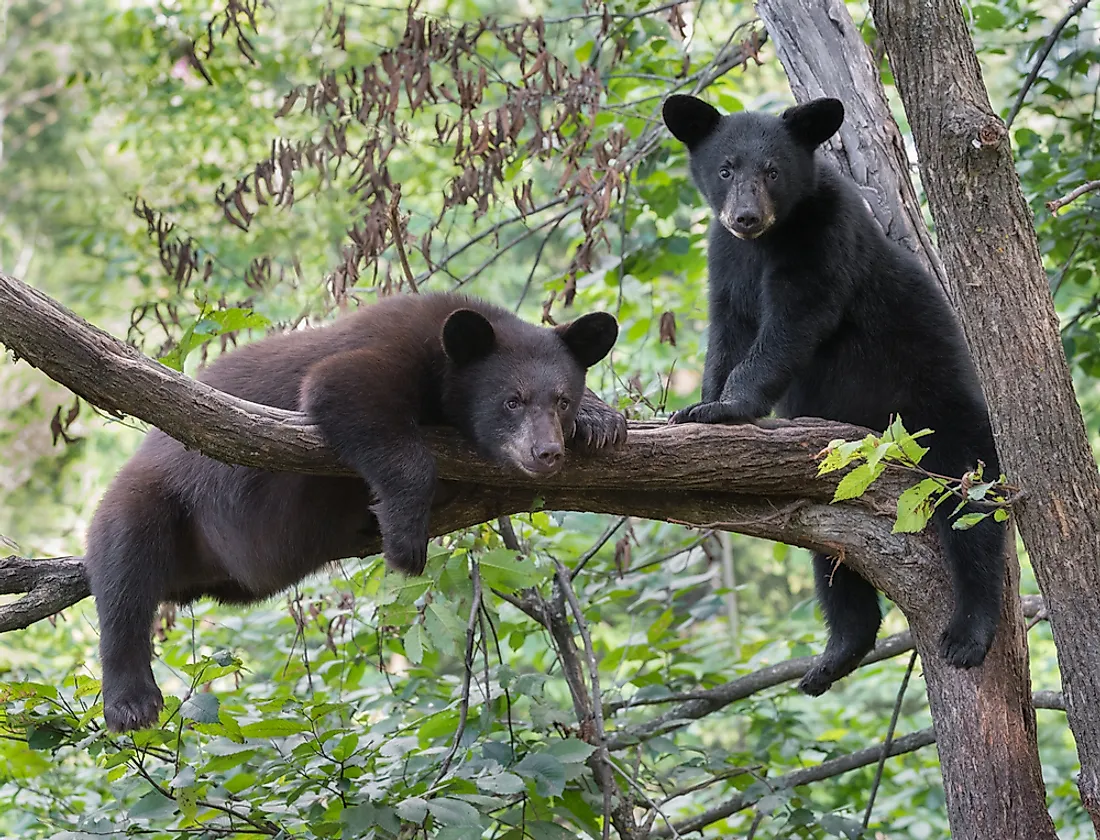Can Bears Climb Trees?

Bears are classified under the carnivoran mammals; these species are widely spread in the Northern Hemisphere while some species are partially distributed in the Southern Hemisphere. There are eight species of bears in the world, and they are distributed around North America, Asia, South America, and Europe. Polar bears are entirely carnivorous; the giant bears are observed to feed mostly on bamboo while the remaining six species are classified as omnivorous. Bears are excellent climbers, as well as swimmers and runners.
Characteristics of Bears
Even though the different species of bears have different feeding habits, the majority of the bears are omnivorous feeding mostly on leaves, insects, and fish. Bears are solitary animals; however, mothers take care of their young ones until they are grown enough to hunt and defend themselves. Bears can also be either diurnal or nocturnal mammals; some species of bears are active during daytime while others prefer to hunt in the night. Bears are excellent runners despite having a huge body size. Bears are also excellent swimmers and climbers.
Climbing Abilities of Bear Species
Although the climbing ability of bears depends on various factors, people are commonly advised to climb trees in case they are chased by a bear. However, this technique can work or fail since there are some species of bears that have demonstrated perfect climbing abilities. A grizzly bear can climb trees more easily than the black bears. The climbing capabilities of the grizzly bear depend on the size of the tree and the branches. Generally, bears have huge claws; therefore, for the grizzly bear to be able to climb on trees, the branches must be large enough for the bear to have a firm grip. While running from a bear, it is advisable to select a tree wisely; the tree should be tall enough, and with thin branches. However, the tree should also be strong enough that the bear cannot push it over.
The grizzly bears can easily climb trees when they are smaller and young. As the bear grows in size, it becomes more difficult for them to climb trees. Smaller bears can, therefore follow someone up trees and manage to reach and harm them. On the other hand, larger bears are capable of pushing the tree over due to their massive power. Numerous cases have been documented of huge bears pushing trees to hunt down hikers. While being chased by a bear, it is advisable to distract the bear by dropping something that can keep the bear interested while running away from them. In a situation whereby a bear tries to climb up the tree for someone, they can try to fight it by stepping on it or using a stick to poke the bear’s eyes.
Conservation of Bears
Since the prehistoric times, bears have been hunted for their fur and meat. On top of being hunted continuously, bears have been widely used for bear baiting which has resulted in most of them getting hurt. According to the IUCN report, six of the eight bear species are regarded as being vulnerable.











